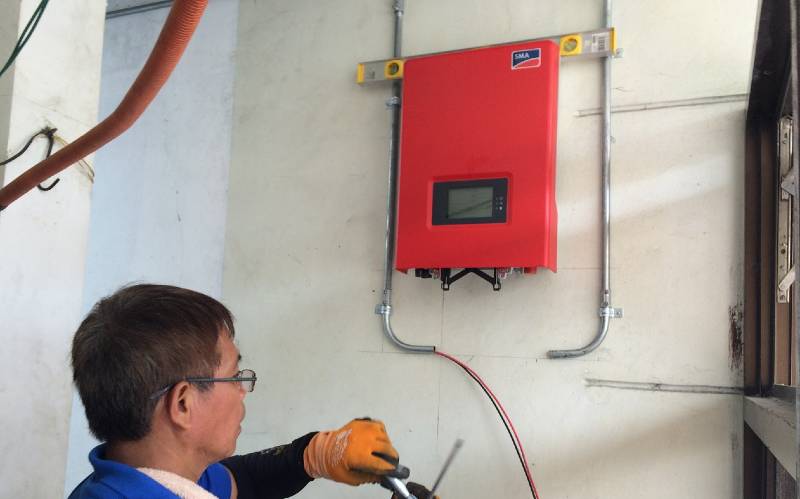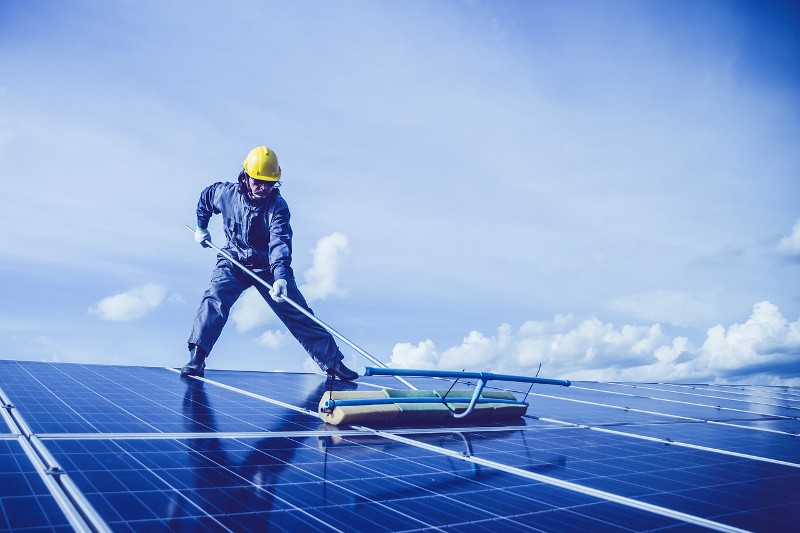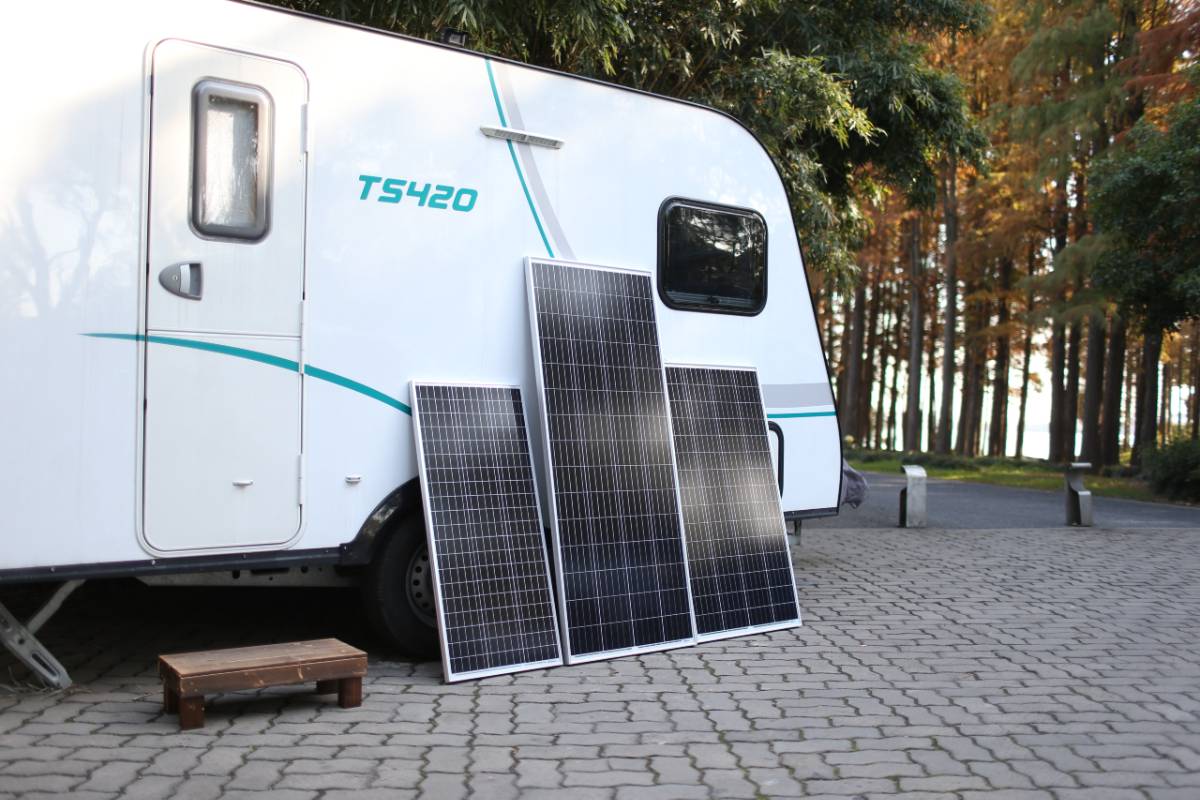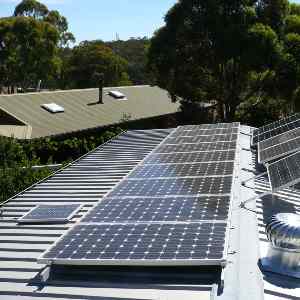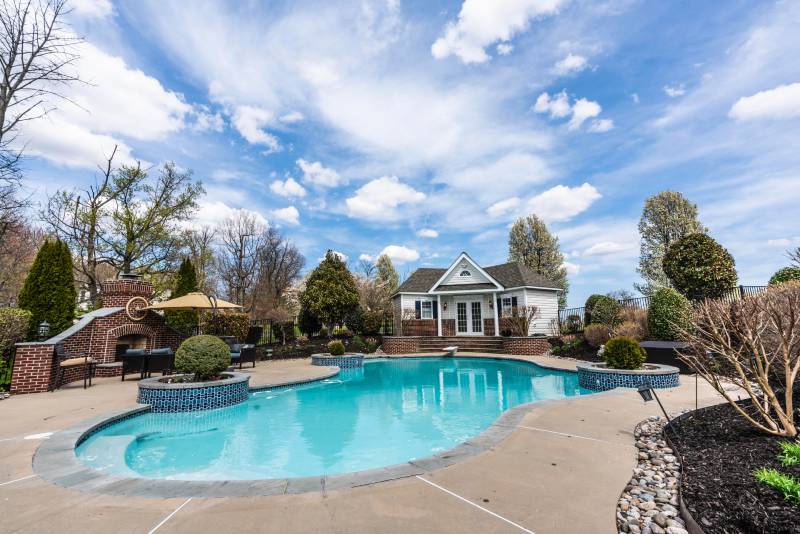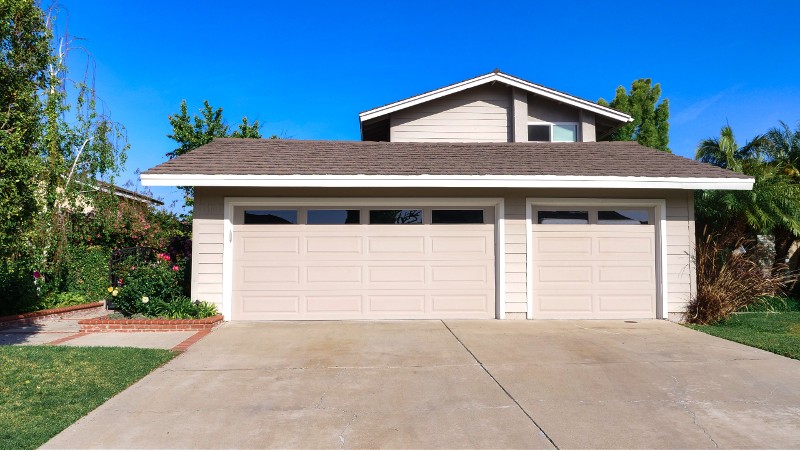As energy costs continue to climb worldwide, solar panels emerge as a shining solution.
They not only slash your electricity bills but also enhance your home’s market value.
Considering switching to solar?
Typically, the full installation journey stretches from about 2 to 7 months.
In this article, I’ll walk you through each step of the process, from the initial consultation with your installer to the final activation of your panels.
Key Takeaways
- To install solar panels, the process typically takes about 2 to 6 months, influenced by the system’s complexity and local regulations.
- Choosing a reputable installer with at least 5 years of experience and necessary certifications like those from NABCEP ensures reliability and expertise.
- The process includes a site assessment and system design phase lasting one to three weeks, where suitability and customization are key focuses.
- Obtaining necessary city permits can extend the timeline by a few weeks to two months, depending on local government efficiency and system complexity.
- The actual setup of the solar panels is usually the quickest part, completed within a day, though activation awaits city inspections and utility permissions.
Solar Panel Installation Process Timeline
Before Installation
1. Choosing a Solar Installer: 1 Day – 2 Weeks
Since solar panel installation can be daunting, starting on the right foot is key in picking the best installer.
Ideally, you’ll need a company that’s been in the business for at least 5 years.
Companies with a track record suggest they are reliable and well-established, which is crucial since they’ll maintain your system for years.
Another important aspect to consider is the installer’s certification.
Look for those who are certified by the North American Board of Certified Energy Practitioners (NABCEP).
This certification is a testament to the installer’s skill and knowledge, giving you extra peace of mind about their capabilities.
The value of customer reviews can’t be overstated.
These provide real-life insights into the installer’s reliability, the quality of their work, and their approach to customer service.
Positive reviews are reassuring, but it’s also wise to pay attention to any negative feedback as these can highlight potential issues.
I also recommend you get quotes from at least 3 different installers.
This not only helps you get a feel for the market rates but also lets you closely examine what each installer offers in terms of service, warranties, and equipment.
2. Site Assessment: 1-3 Weeks
Ok, so after comparing different quotes and hearing back from some installers, you should have a good idea of who you would like to work with.
At this point, the installer comes out to your home to assess the site and make sure it’s suitable for solar panels.
Here are a few things they’ll look at:
- Check the age & condition of your roof and whether it can support the solar panels’ weight for more than 25 years.
- Take measurements of your roof (size, orientation, pitch, and slope).
- Conduct a shading analysis to see if any obstructions will cast shadows on your solar panels and determine the best placement for maximum energy production.
- Evaluate your energy usage and consumption patterns to know how many panels and what type of solar system to run your home.
- Inspect the main service panel and electricity-producing equipment to figure out the necessary upgrades.
- Estimate the cost of installing your solar system and your return on investment (ROI).
It’s worth noting that while the actual site assessment might only take a few hours, scheduling can vary widely.
Due to the busy schedules of solar installers, it can take up to 3 weeks from your initial request for an assessment until the installer is available to visit your home.
Depending on the site assessment, you may need to make some changes or adjustments before proceeding (e.g., moving trees or other obstacles, reinforcing your roof, etc.).
This thorough evaluation ensures the solar panels will be optimally placed and that your home is properly prepared for them.
3. Solar System Design: 2-3 Weeks
The previous step was all about getting a clearer picture of what your home looks like and how it performs.
Now, the solar engineer will use all of this information to design a custom solar system for you.
They’ll consider your energy usage as well as any other constraints or preferences you may have.
Then, they’ll generate a 3D model of your roof, put together the array layout, and determine exactly how many panels will be needed for your system.
For most homeowners, this is when the real “fun” begins.
You will be given a detailed system design that includes specifications, warranties, and schematics for your panels as well as your inverter, mounts, and wiring.
The actual period of this process takes anywhere varies depending on how complex the system is and your local building codes.
4. City Permits: 2-7 Weeks
Adding solar panels is like starting a mini construction project on your home, which means you’ll need to get the right permits from your city before anything can start.
Usually, you need to fill out applications for both electrical and building permits.
These applications will include detailed plans of your solar system and how much power it’s expected to produce.
Getting these permits can take a while, anywhere from a few weeks to two months.
It depends on how busy your local permit office is, as well as the specifics of your solar setup and any additional requirements your city might have.
If you’re wondering just how long it’ll take in your case, a good move is to contact your local permit office directly.
You can also check out a tool called SolarTRACE, developed by the National Renewable Energy Laboratory, for a more tailored estimate.
Now, waiting around for permits can be pretty annoying, but the good news is that you won’t have to handle all that paperwork and red tape yourself.
Your solar installer or contractor will take care of the entire permitting process for you.
That’s one less headache to worry about as you make the switch to solar energy!
5. Ordering System Equipment & Schedule Installation Date: 1-4 Weeks
Once your permits are all set, your solar installation can finally kick off.
If your installer has everything they need right there in their warehouse, they can get started pretty quickly.
That said, you might need to hang tight for a bit while they find an open spot in their schedule to come out and set up everything at your house.
Usually, this could take about a week just to fit you in.
Now, if your installer needs to order the equipment, it’s going to take a bit longer.
Depending on how readily available the equipment is and if there are any supply chain hiccups (which can happen with solar gear), you might wait for a few weeks.
And just a heads-up if you’re thinking about adding a solar battery to your setup: these are popular right now and might be tough to get quickly.
Batteries are in high demand, so if you’re going this route, prepare for possibly an even longer wait.
This means your installation could be pushed back a bit while you wait for all your gear, including the battery, to arrive.
Installation
6. Installation Day: 6 Hours – 3 Days
It’s installation time!
Believe it or not, the actual installation of your solar panels is going to be the quickest part of the entire process.
On installation day, the installers will come to your home and get straight to work.
They’ll be up on your roof setting up the racking systems to hold the panels, laying down the panels themselves, and handling all the necessary wiring for your solar equipment.
If everything goes smoothly and there are no unexpected issues, the installation should only take a few hours.
However, if you’ve opted for a larger or more complex system, the installation could stretch over multiple days.
But even in more involved cases, it typically won’t take more than a few days to get everything up and running.
After Installation
7. City Inspection: 1-2 Weeks
Now, how would the city know if you installed the panels correctly as proposed in the permit?
The only way they can verify that your system meets all building and electrical codes is to send out a city inspector.
And of course, inspectors have busy schedules, so it can take anywhere from 1-2 weeks for them to inspect your solar system.
If your installer did a good job, the inspector will approve your system and your solar company will then take care of the paperwork with your utility company to connect you to the grid.
8. Utility Permission to Operate (PTO): 2-6 weeks
Congratulations!
You’ve made it to the final step of your solar panel installation process.
Now that everything is installed, the last thing to do is get the official go-ahead from your utility company, known as the Permission to Operate (PTO).
This involves the utility company connecting your new solar system to the electric grid.
Typically, a utility representative will visit your property to install a new electric meter that’s capable of tracking how much solar energy you produce.
They’ll also conduct a quick inspection to ensure everything is set up properly.
Unfortunately, this part can take a while—sometimes up to a few weeks.
But once it’s done, you’re all set to start using your solar panels!
As for maintenance, solar panels are a pretty low hassle.
They don’t have moving parts, so they require very little upkeep and rarely fail.
The tilt of the panels combined with the rain is usually enough to keep them clean.
However, for optimal performance, it’s a good idea to clean them more thoroughly about twice a year.
This ensures they’re operating at their best and you’re getting the most out of your solar investment.
What Affects Solar Panel Installation Time?
1. Your Solar Installer’s Experience
As I said before, picking an installer with at least 5 years of experience is a solid plan if you want your solar panel installation to go smoothly.
These pros know their way around, which means they can speed things up and cut down on any problems.
They’re pretty savvy when it comes to sorting out permits, they get the local rules, and they’re good at tackling any surprises that might come up.
All this know-how helps everything flow better, from the first step to the last.
It means your solar system will be set up right and working efficiently, so you can start cutting down those energy bills sooner.
2. The Solar System’s Size & Complexity
If you’re opting for a bigger solar setup or one with lots of high-tech features, it’s going to take a bit more time to get everything up and running.
A system with more panels or one that needs to fit onto various roof shapes, or maybe integrate with your existing home energy systems, definitely ramps up the complexity.
Each piece of the system has to be placed just right and thoroughly tested to make sure it all works perfectly together.
Sometimes, to get the most out of your solar, a few extra tweaks during installation might be necessary too.
In cases like this, my advice is to give yourself some wiggle room in your schedule.
Expect that it might take a bit longer and try to stay flexible.
Plus, keeping in touch with your installer throughout the process is key.
They can fill you in on how things are going and any hurdles they might encounter.
This way, you won’t be caught off guard by any delays, and you’ll know exactly what’s happening.
3. Time of Year
Weather conditions play a big part in scheduling installations.
For example, in areas with harsh winters, it might not be feasible to install solar panels during the coldest months due to snow and freezing temperatures, which can delay the project.
Similarly, very rainy or stormy seasons can make it difficult for installers to work safely and effectively on your roof.
Demand for solar installations also tends to vary with the seasons.
Spring and summer are busier times for solar companies because the weather is more conducive to outdoor work.
During these peak times, you might find that you have to wait longer for your installation to begin due to the high volume of projects installers are handling.
To avoid delays, schedule your solar panel installation during quieter times of the year, like late fall or early winter, depending on the weather where you live.
4. City Regulations & HOA Approval
Each city has its own set of permits and regulations for installing solar panels, and these can vary a lot.
Sometimes, these rules are pretty straightforward, but in other places, they might be more complex and take longer to navigate.
If you’re part of a community with a Homeowners Association, you’ll also need their approval.
HOAs often have specific rules about how solar panels should look and where you can place them.
The approval process can be quick and easy for some HOAs, but others might take a bit more time and require more paperwork.
I prefer to get a head start on these approvals.
By tackling the paperwork early and reaching out to both the city and the HOA, you can smooth out the process and avoid any delays.
It’s also a good idea to keep all your documents organized and to follow up regularly to keep things moving.
This approach can streamline the whole process, helping you get your solar panels up and running more quickly.
5. Roof Condition
Solar energy systems are designed to last for 25 years, but your roof might not be up to the task for that entire time.
If it looks like your roof might need some repairs in the next ten years, it’s a good idea to take care of those before adding solar panels.
Why?
Well, putting panels on a weak roof can lead to major issues later, which nobody wants.
Also, keep in mind that fixing your roof might require a permit, and that can stretch out the timeline of your solar project a bit.
You’ll need to deal with some extra paperwork and wait for the go-ahead before you can start.
6. Solar Equipment Availability
Sometimes, getting your hands on the right solar equipment can be a bit hit or miss, due to things like COVID-19 or the season.
Let’s say it’s finally time to put those panels up, but oops — the solar panels, inverters, or other key bits you need aren’t in stock.
Now, you’ll have to order them, which might delay your project a little.
And here’s another twist: if the original equipment you planned on using isn’t available, you might have to switch gears and pick something else.
If that’s the case, you’ll need to whip up a brand-new set of plans and get them over to your city’s Building and Safety department.
This means a bit more paperwork and a bit more waiting for the green light, which could stretch out your installation timeline even further.
FAQs
Can Solar Panels Be Installed in One Day?
Solar panels can sometimes be installed in one day, but this usually applies to smaller or less complex systems. For larger installations, it can take several days.
What Is the Duration for Solar Installation?
The duration of a solar installation ranges from a few weeks to several months, depending on factors like system complexity, permitting, and equipment availability.
How Long Do Solar Panels Take to Start Working?
Solar panels start working immediately to convert sunlight into electricity once they are installed and connected.
Conclusion
As promised, we’ve covered every key stage of the solar panel installation process, from selecting a reputable installer to flipping the switch on your new system.
But here’s a pro tip: stay engaged throughout the installation.
Regularly communicate with your installer to ensure each step meets your expectations and to quickly address any issues.
Also, consider documenting the process through photos or a journal.
This not only gives you a firsthand look at your project’s progress but can be helpful if you need to verify the installation’s quality or resolve any conflicts with your installer.

